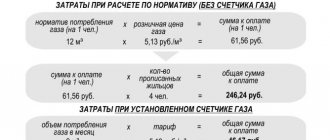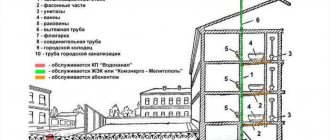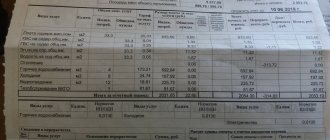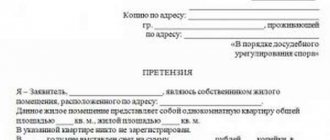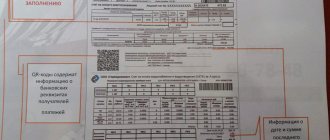Water disposal is included in the receipt for housing and communal services without fail, which means that all consumers must pay for this service in the same way as for other resources. At its core, this service consists of removing used water from premises, purifying it and further recycling it.
Owners of not only apartments, but also some owners of private houses are required to pay for sewerage. It is important to understand that drainage does not only mean the sewer system. The service includes draining the used resource, diverting it from housing, transportation, direct disposal and cleaning for reuse.
The water supply and sanitation system is currently regulated by the relevant law, adopted on December 7, 2011. It also reflects the requirements for the service provided and the rules for quality control thereof. In addition to this law, in this matter one should also refer to the regulations that regulated it previously, namely government regulations, regional acts, regulations of territorial organizations of suppliers.
Since we are talking about a separate category of utility services, consumers need to know how sewerage is calculated and what the differences are between calculations with and without metering devices.
Dear readers!
Our articles talk about typical ways to resolve legal issues, but each case is unique. If you want to find out how to solve your specific problem, please contact the online consultant form on the right →
It's fast and free!
Or call us by phone (24/7):
If you want to find out how to solve your particular problem, call us by phone. It's fast and free!
+7 Moscow,
Moscow region
+7 Saint Petersburg,
Leningrad region
+7 Regions
(free call for all regions of Russia)
Rules for calculating consumed resources
If you are interested in the question of how to calculate drainage, you must be guided by the following rules:
- In accordance with the thirteenth paragraph of Government Decree of the Russian Federation No. 392 of July 30, 2004, to determine the amount of payment, an established formula is used, where the tariff for sewerage adopted in the region is multiplied by the size of the resource consumed;
If there are installed individual meters for hot and cold water in the apartment, their indicators are used in the formula; when calculating per person without a meter, the average indicators adopted by local governments are used;- If sewerage meters are available, the number of cubic meters of hot water is multiplied by the regional tariff, taking into account VAT, after which the number of cubic meters of cold water is multiplied by the same tariff and these two results are summed up, which is the amount payable;
- In the absence of meters for metering resource consumption, standard standards for the locality are applied, regardless of how much the consumer actually uses and whether he uses it at all;
- Current standards are reviewed annually and published on the official websites of local administrations, as well as in local media;
- When it comes to an apartment building, common house meters are taken into account, if any.
Rationing is the basic rule of any calculations
Each region has its own standards for water consumption (drinking, for sanitary and hygienic needs, for everyday life and household use).
This is explained by different geographical locations and weather factors. Let’s take the daily norms of volumetric parameters of water consumption and wastewater disposal, distributed for household and household needs. Let's not forget that they are the same in terms of water supply and disposal, but depend on how comfortable the home is.
Standard water consumption values:
- with an outdoor water stand - from 40 to 100 liters per person;
- apartment-type residential building without bathrooms – 80/110;
- the same with baths and gas heaters - 150/200;
- with centralized cold and hot water supply – 200-250.
There are also water consumption standards for caring for pets and poultry. They include costs for cleaning pens, cages and feeders, feeding, etc. 70-100 liters are provided for a cow, 60-70 liters for a horse, 25 liters for a pig, and only 1-2 liters for a chicken, turkey or goose.
Due to a small water leak, water supply costs will increase significantly. Some reserve for unexpected water consumption is better than the fate when performing the balance calculation (+)
There are standards for the operation of vehicles: tractor equipment - 200-250 liters of water per day, car - 300-450. It is necessary to plan water consumption for fire extinguishing for all buildings and structures, regardless of operational purpose. Even for gardening societies there is no exception: the water consumption rate for extinguishing a fire outside is 5 liters per second for 3 hours, for an internal fire - from 2 to 2.5.
Water for fire extinguishing is taken from the water supply. Fire hydrants are placed on water pipes in wells. If this is not technically feasible or unprofitable, then you will have to take care of a reservoir with a supply of water. This water must not be used for other purposes; the period for restoring the supply in the reservoir is three days.
Irrigation water consumption per day: 5-12 l/m2 for trees, shrubs and other plantings in open ground, 10-15 l/m2 – in greenhouses and greenhouses, 5-6 l/m2 – for lawn grass and flower beds. In industry, each industry has its own characteristics of rationing water consumption and waste disposal - pulp and paper production, metallurgy, petrochemicals, and the food industry are water-intensive.
The main purpose of rationing is to economically justify the norms of water consumption and drainage for the purpose of rational use of water resources.
During a day off (cleaning the apartment, washing, cooking, bathing in the shower and bath), the average daily water consumption can be exceeded 2-3 times (+)
Tariff formulas
To summarize the above, the formula by which the amount payable for sewerage is calculated is as follows:
(cold water supply + hot water supply) *territorial tariff.
So, when the total cost of hot and cold water supply for the past month is thirty cubic meters at a tariff of eighteen rubles - 30 * 18 = 540 - this is exactly how much you will have to pay.
It is in the interests of each consumer to independently control the standards of consumed resources and the required payment amounts. Management companies sometimes take advantage of the inattention of the population and their low legal awareness, so before making a payment it would be a good idea to check the figures on the receipt with the real numbers. So, for example, if the receipt states that eight cubic meters of cold water were consumed per month, and nine cubic meters of hot water, which is equal to twenty in total (although it should be seventeen), the consumer has the legal right to complain to the management company in court.
In reality, paying by meter installed for the entire house is not such a common occurrence today. However, all residents of an apartment building where such a metering device is available have the right of access to its readings. Although, on the other hand, it is impossible to calculate from it exactly who used it and how much; this requires only individual counters.
Are drainage and sewerage the same thing?
Not everyone knows that drainage and sewerage are different concepts! Those homeowners who do not pay for sewerage are acting illegally, believing that it is the same thing. Let's find out if this is true.
What does drainage consist of?
Disposal of water used for the needs of apartment buildings and private buildings is an important event, consisting of:
- drainage of domestic wastewater from residential and non-residential premises through centralized sewer networks, which must be carried out around the clock;
- transportation of wastewater to treatment facilities;
- passing through a cleaning and disinfection system with subsequent use for technical purposes or discharge into natural bodies of water.
Conclusion: All sewage is removed from the house by drainage, then it is cleaned, and only then collected in the sewer and transported. In order for all systems to work efficiently and uninterruptedly, it is necessary to constantly maintain them in normal working condition. And this requires certain financial costs, which are covered by resource consumers.
Orientation by receipts
If common house meters or individual metering devices are installed in the apartment, there is no problem in calculating the amount to be paid, knowing a simple formula and using the example calculations given above. In the absence of meters, as mentioned above, regional standards apply. In this case, you don’t need to count anything at all; all the information will be displayed on the receipt.
By studying the information presented in the receipt, which is sent to all consumers every month, you can find out whether the apartment building has common meters. So, if these are installed for hot and cold water, the receipt will contain such designations as GV DPU and HVS DPU. In this case, you will have to multiply the regional sewerage tariff not by the indicators of your personal meters in the apartment, but by the indicators of the common household one.
General household needs, such as cleaning the territory and entrances, are also deducted from the readings of joint metering devices. If there are no such devices, but there are individual meters in the apartment, this will be reflected in the receipt with the marks GV IPU and HVS IPU.
For all controversial and other issues that arise upon receipt of a receipt for payment, regardless of the presence of a meter, you must contact the management company directly.
The meaning of the balance of water consumption and drainage systems
Balance scheme of water consumption and wastewater disposal (example).
Why is it necessary to calculate the ratio of the volume of water consumed to the volume going into the sewer, hardly anyone can say for sure. Therefore, it is important to consider everything in order. Firstly, an accurate calculation of the balance is needed in order to correctly design communications, which in this case will flawlessly cope with both the supply of the required volumes of water and the removal of waste and contaminated water through sewer systems.
Secondly, the table and calculation of water consumption will be useful in order to make a high-quality calculation of all parameters of the pipeline being laid. This includes power, geometric and physical parameters of the systems. In addition, the calculation table of water supply systems will help in choosing the necessary equipment, a submersible drainage pump, for example, the size of which is calculated according to the diameter of the well, if a private homeowner decides to arrange an independent water source for his site.
A correctly and timely prepared calculation of the water consumption balance will facilitate the receipt of documents permitting the supply of water and the reception of wastewater.
But only in the case when the design of drainage concerns centralized utility systems and, accordingly, connecting your facility to them. Without a prepared balance sheet, it will be impossible to obtain an official license for the right to use natural resources, that is, water, again coming from a well located on your site, that is, one that belongs to you personally. An agreement with companies representing local utilities also requires a prepared calculation of the water supply to the premises and wastewater discharged from the same facility.
Consumer rights
When navigating how to calculate water drainage using a meter, it is important to know that in addition to the obligation to timely and fully pay for utilities, which includes sewerage, every consumer has the right to receive quality services. If they are not provided or do not meet the requirements established by Russian legislation, every citizen has the right to demand a recalculation.
Preparation of documents for filing a complaint:
- Independent written calculations of the required fees in accordance with the attached receipts;
- Official report of the management company for the current year;
- Planned expenses of the management organization for the next year (estimates, copies of related documentation);
- Information about the income and expenses of the management company.
In order for recalculation for low-quality services to actually be made, it is necessary to provide recorded evidence that they were actually provided of low quality, which violates legal norms, and from what period. All provided utilities are calculated for a certain time period, so if it is not recorded, it will not be so easy to prove anything.
What are the consequences of refusing to pay for sewerage?
If a consumer refuses to pay for wastewater disposal or delays payments, the utility company may resort to the following measures:
- accrual of penalties if services are not paid on time - payment must be made before the tenth day of the month following the reporting month;
- applying to the court to forcibly collect the debt - if the court considers the plaintiff’s demands to be justified, the decision is transferred to the executive authorities, after which property may be seized and other measures may be taken to obtain the required amount from the debtor;
- ban on traveling abroad - information about debtors is transferred to the relevant services that do not allow such persons to go abroad.
Sewage services require payment, along with other utility bills. This item is written on a separate line in the housing and communal services receipt. If the consumer wants to avoid the hassle of late payments, bills must be paid in full and on time so that the resource supplier has the opportunity to ensure the functioning of the drainage system.
